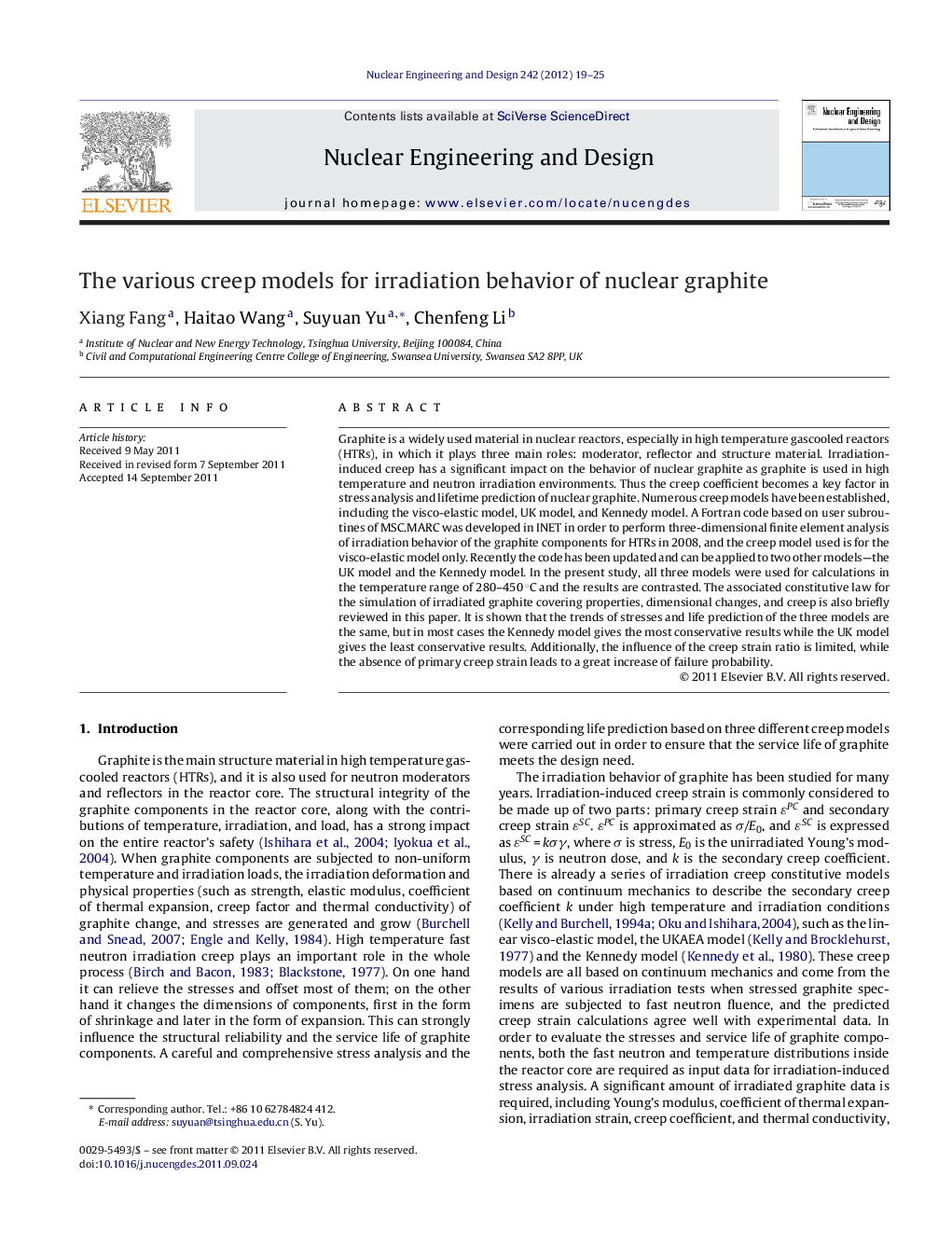| کد مقاله | کد نشریه | سال انتشار | مقاله انگلیسی | نسخه تمام متن |
|---|---|---|---|---|
| 297331 | 511755 | 2012 | 7 صفحه PDF | دانلود رایگان |

Graphite is a widely used material in nuclear reactors, especially in high temperature gascooled reactors (HTRs), in which it plays three main roles: moderator, reflector and structure material. Irradiation-induced creep has a significant impact on the behavior of nuclear graphite as graphite is used in high temperature and neutron irradiation environments. Thus the creep coefficient becomes a key factor in stress analysis and lifetime prediction of nuclear graphite. Numerous creep models have been established, including the visco-elastic model, UK model, and Kennedy model. A Fortran code based on user subroutines of MSC.MARC was developed in INET in order to perform three-dimensional finite element analysis of irradiation behavior of the graphite components for HTRs in 2008, and the creep model used is for the visco-elastic model only. Recently the code has been updated and can be applied to two other models—the UK model and the Kennedy model. In the present study, all three models were used for calculations in the temperature range of 280–450 °C and the results are contrasted. The associated constitutive law for the simulation of irradiated graphite covering properties, dimensional changes, and creep is also briefly reviewed in this paper. It is shown that the trends of stresses and life prediction of the three models are the same, but in most cases the Kennedy model gives the most conservative results while the UK model gives the least conservative results. Additionally, the influence of the creep strain ratio is limited, while the absence of primary creep strain leads to a great increase of failure probability.
► Various nuclear graphite creep models are studied.
► Visco-elastic model, UKAEA model and Kennedy model are included.
► Stress and failure probability in 280–450 °C are predicted for 30 years.
► The results of various models showed good agreements.
Journal: Nuclear Engineering and Design - Volume 242, January 2012, Pages 19–25